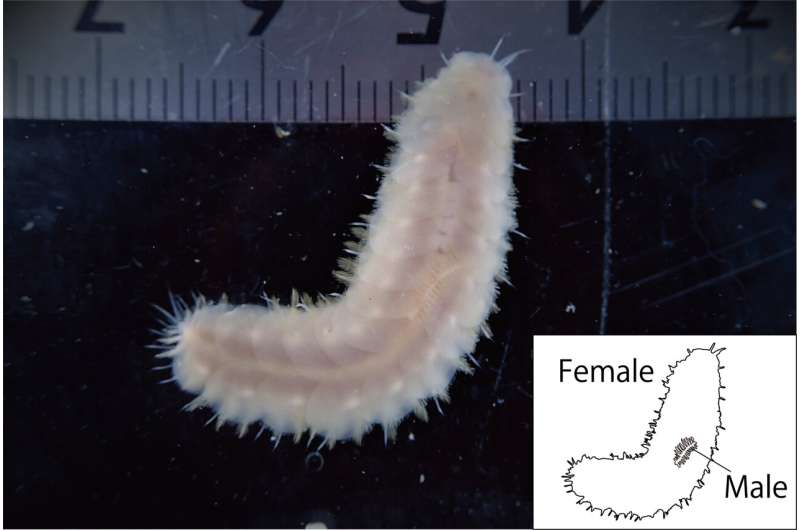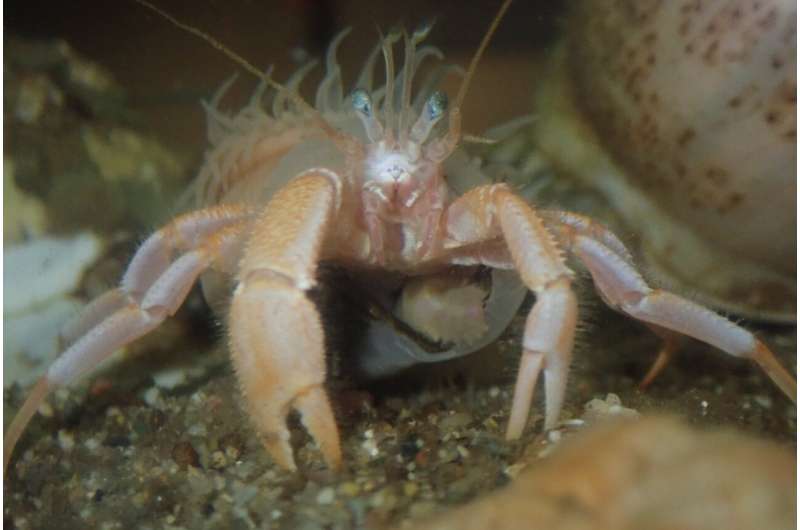New marine scale worm species first to provide evidence of male dwarfism

In the Kumano Sea, off the southeast coast of Japan, an evolutionary mystery lays in wait. Researchers have collected samples from the muddy sea floor, including hermit crabs, mollusks and discarded shells. Here, in and on these shells, they found scale worms living mostly in pairs with a striking difference compared to the almost 900 already known species of scale worms: One was a quarter the size of its mate.
The discovery was published on March 29 as the cover of the Journal of Zoological Systematics and Evolutionary Research.
"The species is characterized by males being dwarf, with their minute bodies always riding on the dorsal side of females," said paper author Naoto Jimi, postdoctoral researcher at the National Institute of Polar Research, Research Organization of Information and Systems. "It is the first case of extreme sexual size dimorphism in scale worms."
Scale worms are found in every ocean, from low tidal areas to deep seas. They are characterized by the scale-like structures on their backs, and nearly half of them are symbiotic, depending on a host organism to survive. Named after Issun Boushi, a Japanese fairy tale character only three centimeters tall, the recently discovered scale worm is the first demonstrating male dwarfism.
"Extreme sexual size dimorphism is one of the most striking phenomena in evolutionary biology," Jimi said. "While the origin has been well discussed and some causes have been suggested, the evolutionary history remains unclear."

The researchers conducted extensive observations, as well as morphological and genetic analyses. They found that the scale worms always lived in shells, occupied or not, and males were never found without a female counterpart, but single females were occasionally found. In more than 200 sea collections, they never found this scale worm species living without a shell. However, their ancestral analysis revealed that the species likely descended from free-living organism.
"Our data strongly suggest that, based on the ecological and behavioral features, the development of male dwarfism in E. issunboushi is more likely to be related with their symbiotic lifestyle inside gastropod shells occupied by a hermit crab," Jimi said, noting that other symbiotic species live in the same habitat but have not evolved male dwarfism. "The unique environmental and ecological traits may have led to the development of the dwarf male, but this needs to be tested based on additional cases in the future."
More information: Naoto Jimi et al, First evidence of male dwarfism in scale worms: A new species of Polynoidae (Annelida) from hermit crab and molluscan shells, Journal of Zoological Systematics and Evolutionary Research (2021). DOI: 10.1111/jzs.12463
Provided by Research Organization of Information and Systems




















